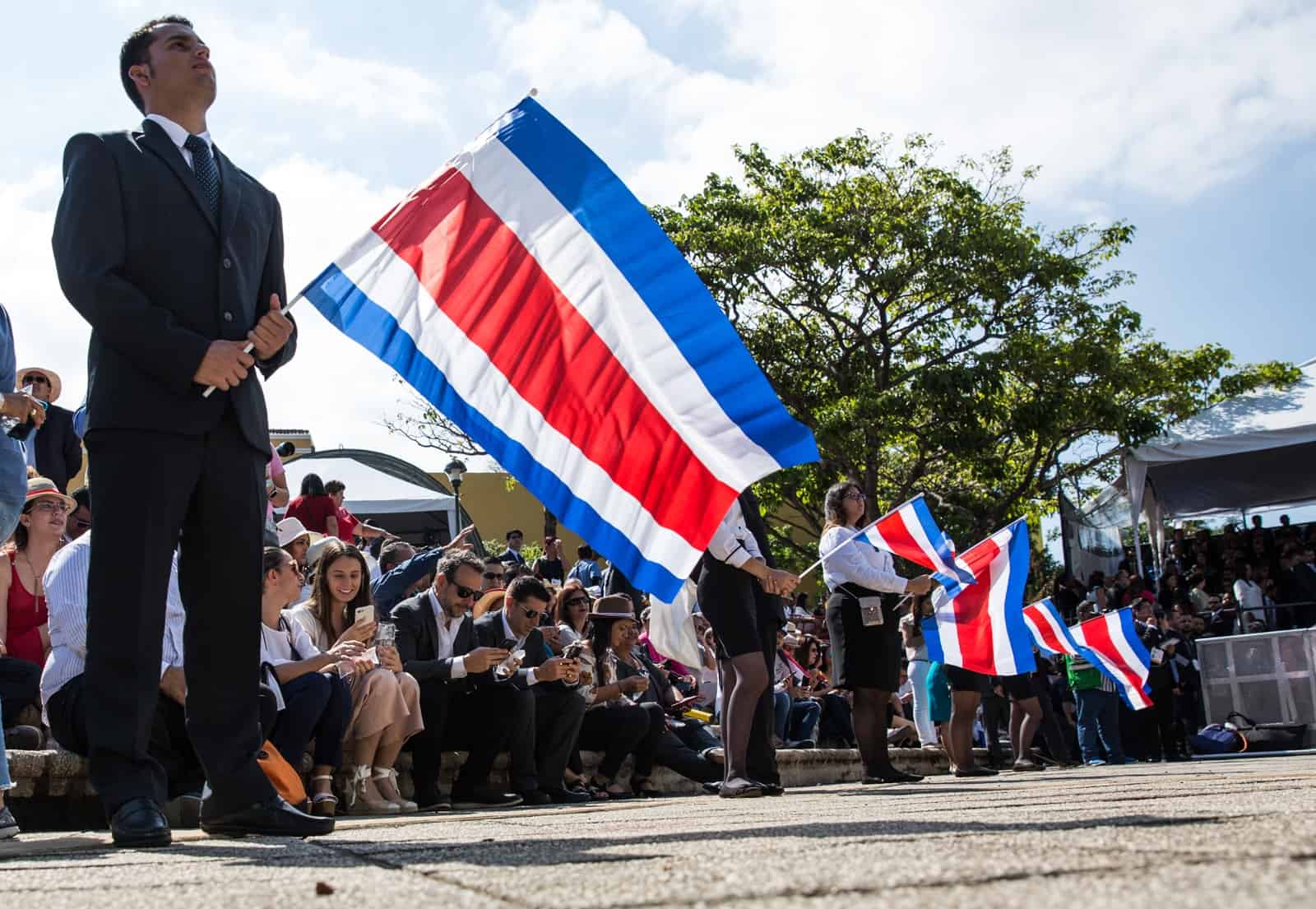The month of September is a time of flags flying, bunting on balconies and red, white and blue ribbons ’round posts and railings. Flags of all sizes decorate cars, trucks and buses. Vendors sell flags on street corners and bookstores are filled with children buying paper flags for school parades and programs.
Independence Day is Sept. 15, but the entire month is dedicated to the flag and other symbols of the nation. Where do all the flags come from? Who designed the flag and what do the colors stand for? Where is the biggest flag in Costa Rica? With all the flag-waving, such questions naturally arise.
Costa Rica’s first flag was created in 1823, consisting of a red star on a white field. This was only two years after independence, and the five little countries of Central America were still part of the Guatemalan Confederation, uncertain of the future. This flag lasted less than one year. By 1824, Costa Rica had annexed the Nicoya Peninsula, in the northwestern part of the country.
While it was an independent nation, it was still part of the Central American Federation, so Costa Rica’s second flag had two blue stripes with a white stripe in the middle and a shield depicting five mountains for the five “provinces” of Central America.
This flag was changed several times as the shield of Costa Rica was added below the Central American shield. In 1840, a new flag was designed under President Braulio Carrillo (1835-37 and 1838-42), who declared Costa Rica to be a “free and independent state” separate from the Central American Federation.
This flag had white stripes on the top and bottom with the blue stripe in the middle and bore a shield with an eight-pointed star.Two years later, in 1842, Francisco Morazán, a Honduran with dreams of reuniting Central America under his own banner, captured Costa Rica. Some of his ideas, such as imposing taxes and military service, did not go over too well with the population, which rose up against him.
Five months later, he was routed. For the next six years the situation was rather murky, with José María Alfaro Zamora as provisional head of state from 1842-44, followed by Francisco María Oreamuno, who was elected chief of state by the Legislative Assembly in 1844. However, Oreamuno, described as a “distinguished patriot” by his colleagues, didn’t want the job and resigned 25 days later.
This was an era of conspiracies and intrigues, not to mention attempted revolutions, so the presidency was laid aside while the head of the legislative assembly served as President and a constitutional convention argued over a new constitution. In 1847, José María Castro Madriz, acting vice-president during the murky era, was elected President.
In 1848, Castro settled the situation for all time by declaring Costa Rica a sovereign and independent republic. While he is considered to be the father of the republic, his wife, Pacífica Fernández Oreamuno, is considered to be the mother of the flag. It was she who designed and made the first one by hand. Like many of her contemporaries, she was an admirer of France, which had inspired everything from liberty and fraternity to boulevards and plazas.
For her flag design, she took the colors of the French flag but placed them horizontally. The red center stripe is twice as wide as the other stripes and stands for heat, energy and courage. Blue stripes on top and bottom symbolize the sky, “our protective cover,” and the white stripes are for peace.
Two flag companies make all the flags and bunting in Costa Rica: the Fábrica Nacional de Banderas in Coronado, northeast of San José, and Aron Banderas y Bases in Heredia, north of the capital. The Fábrica Nacional employs 15 people and makes flags and banners for soccer teams, companies, schools and governments, including foreign flags for visiting presidents and international meetings.
The Aron company takes orders but hires other companies to sew and pack the flags. The busiest time of year is July and August, when orders come in for September.
Sizes run from tiny 10-centimeter flags on suction cups for car windows (which, experience shows, blow off and out the window when you’re driving on the highway) to four-by-seven-meter flags that flutter from flagpoles. The material may be linen, polyester or nylon, depending on whether it is for an indoor or outdoor flag. The biggest flag in Costa Rica is at the Rotunda de la Bandera, in Sabanilla de Montes de Oca, east of San José.
Made by the Fábrica Nacional de Banderas, the nylon flag measures nine meters by four meters, 20 centimeters, and flies 17 meters in the air. Such flags cost ¢142,000 (about $300), and only last one month because of weather and pollution.
According to Carlos Brenes of the Ministry of Public Works and Transport, a couple of flags are usually kept on hand.
A children’s book entitled “Símbolos Nacionales de Costa Rica” (“National Symbols of Costa Rica”), available in bookstores, contains pictures and descriptions of all the flags and other national symbols.









